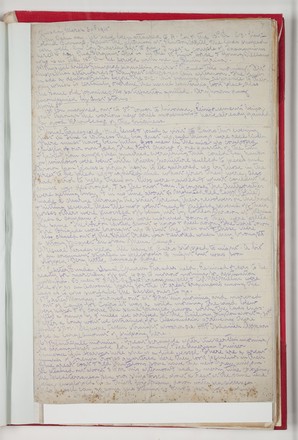
Crooks war diary, 2 April 1915
Purchased from Thomas Ray Crooks, 1919, MLMSS 838
Manuscript

Purchased from Thomas Ray Crooks, 1919, MLMSS 838
Manuscript
In Bean’s Official History, the Battle of the Wazzir is mentioned in a footnote, assuring the reader that the majority of Anzacs present were merely spectators to the riot:‘At a later date there occurred in Cairo one wild scene of which a good deal has been heard. Its origin was somewhat obscure, but the story obtained on the spot and at the time was as follows. On Good Friday of 1915, immediately after hearing of their orders to leave for the front, a few Australian and New Zealand soldiers determined to exact some sort of punishment for certain injuries which they believed themselves to have incurred at some of the brothels in the street known to them as “The Wozzer” — the Haret el Wasser, near Shepheard’s Hotel in Cairo. ... The bad drink sold in the neighbourhood led this demonstration to greater lengths than were intended — beds, mattresses and clothing from several houses were thrown out of the windows and piled in a bonfire in the street. Accounts vary as to whether Australians or New Zealanders predominated — both were involved ... The majority of the crowd consisted of pure spectators, many even photographing the scene — one had his camera hit by a revolver bullet.’
CEW Bean, The Official History of Australia in the War of 1914–1918, Vol. 1, The Story of Anzac: from 4 May, 1915 until the evacuation, p. 130.
Official historian Charles Bean acknowledged some of the bad behaviour among the Australian and New Zealand troops:‘The Australian name was suffering heavily from their drinking and slovenliness. The New Zealand force had suffered from a similar class, but steps had been taken to expel it. Some New Zealand officers were by now encouraging their men to have nothing to do with the Australians, but to show by their neat dress and sobriety that there was a wide difference between the two forces. This attitude, which was to some extent supported by the New Zealand commanders, led to a certain coolness between Australian and New Zealand troops in Cairo.’
CEW Bean, The Official History of Australia in the War of 1914–1918, Vol. 2, The Story of Anzac: from 4 May, 1915 until the evacuation, p. 129.